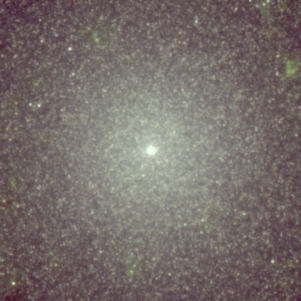My research focusses on central star clusters in galaxies, also known as nuclear star clusters (NSCs).
These objects are the densest stellar systems known and appear most frequently in galaxies of approximately a billion solar masses; about a tenth of the stellar mass of our own galaxy, the Milky Way.
My research on NSCs is motivated by several aspects:
- Their extreme densities result in short relaxation times and frequent dynamical interactions, which themselves are related to various other astrophysical events.
- Both the formation mechanism and subsequent evolution are directly related to the evolution of their host galaxies. As such, NSCs display a great variety in properties.
- Theoretical and observational investigations indicate that these clusters are directly related to globular clusters and ultra-compact dwarf galaxies.
- Some clusters feature massive black holes in their centers, including the Milky Way NSC, and can lead to efficient mass growth of the black hole and rare events, such as the tidal disruption of stars by the black hole.
 Color-composite JWST near-infrared image of the central 950pc × 950pc of Messier 74, a nearby grad-design spiral galaxy, featuring a bright nuclear star cluster.
Color-composite JWST near-infrared image of the central 950pc × 950pc of Messier 74, a nearby grad-design spiral galaxy, featuring a bright nuclear star cluster.
Increased interest in NSC resulted in analyses of statistically significant data sets over the last decade, pushing the number of known clusters beyond one thousand.
Nevertheless, many questions about the details of their formation, evolution, and relation to host galaxies and massive black holes remain unanswered.
The goal of my research is to investigate further these subjects on the basis of high-resolution observational data and semi-anayitcal modelling techniques.
If you are interested to learn more about my research or NSCs in general, please check my publications or get in touch with me!
Back to top